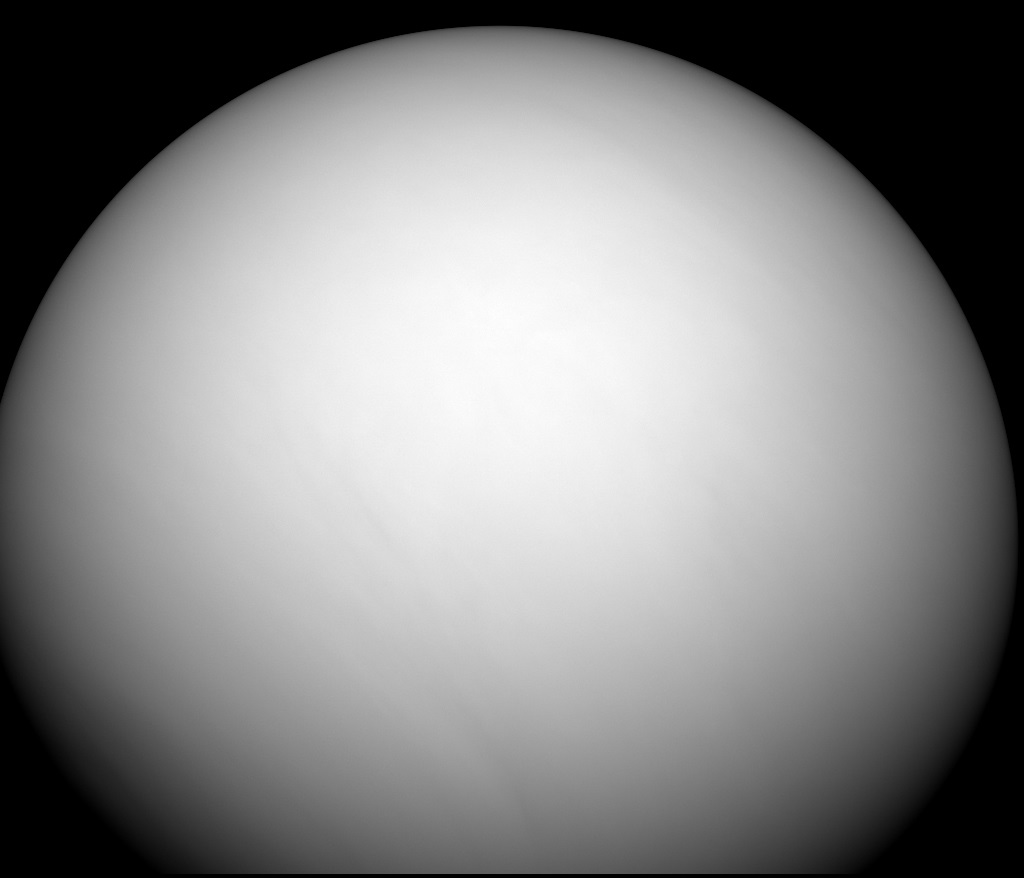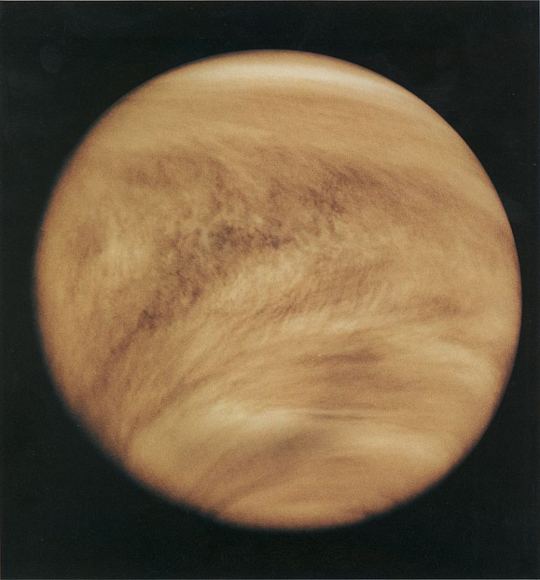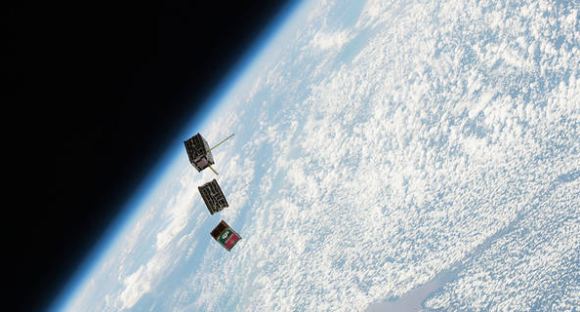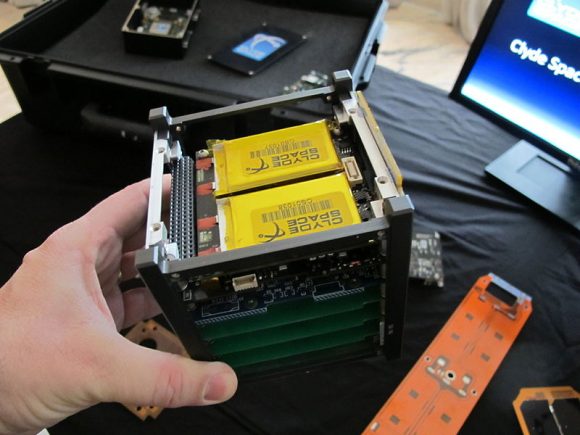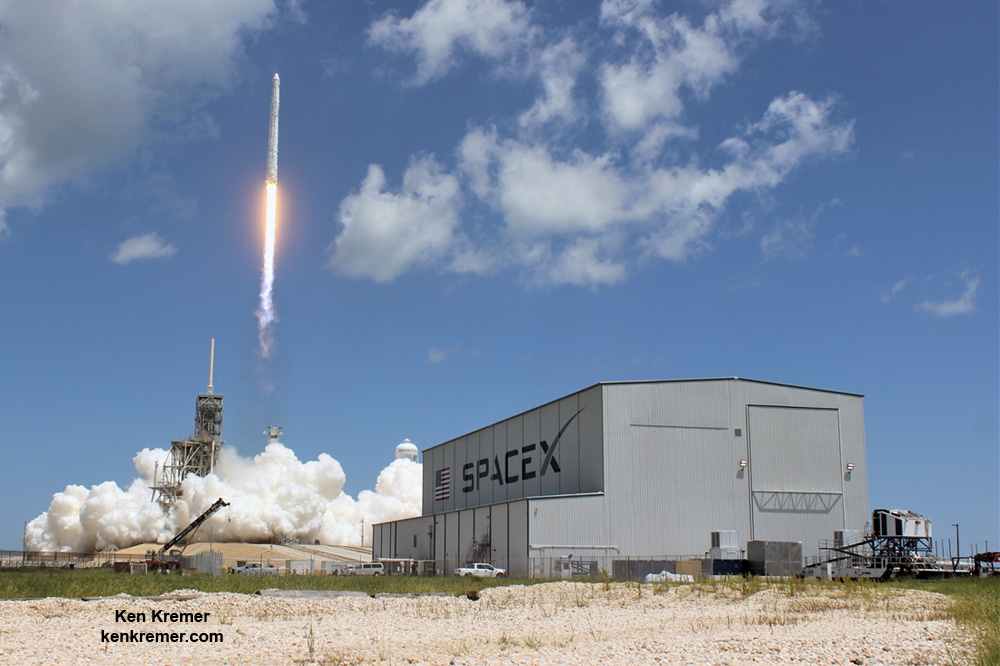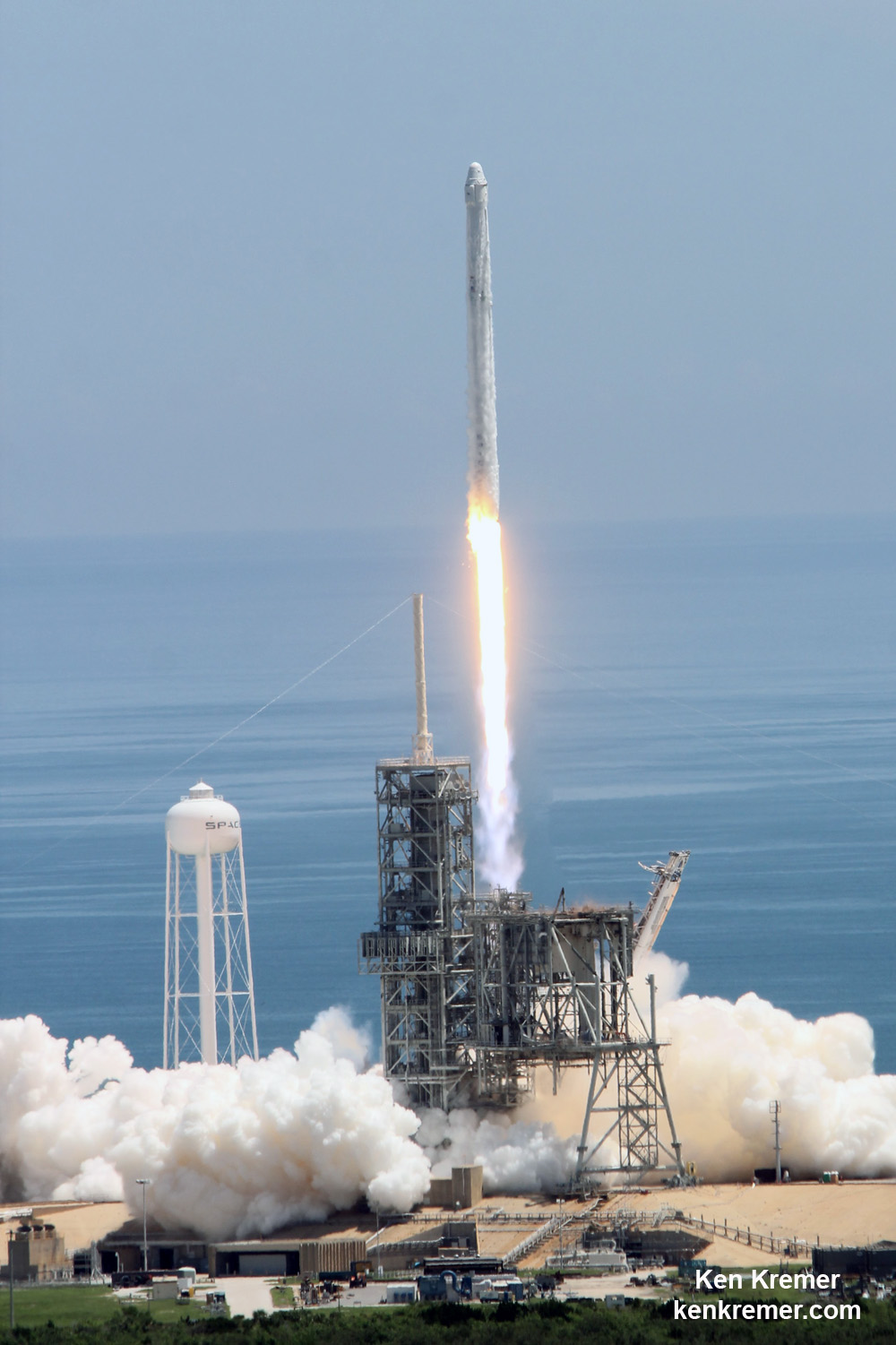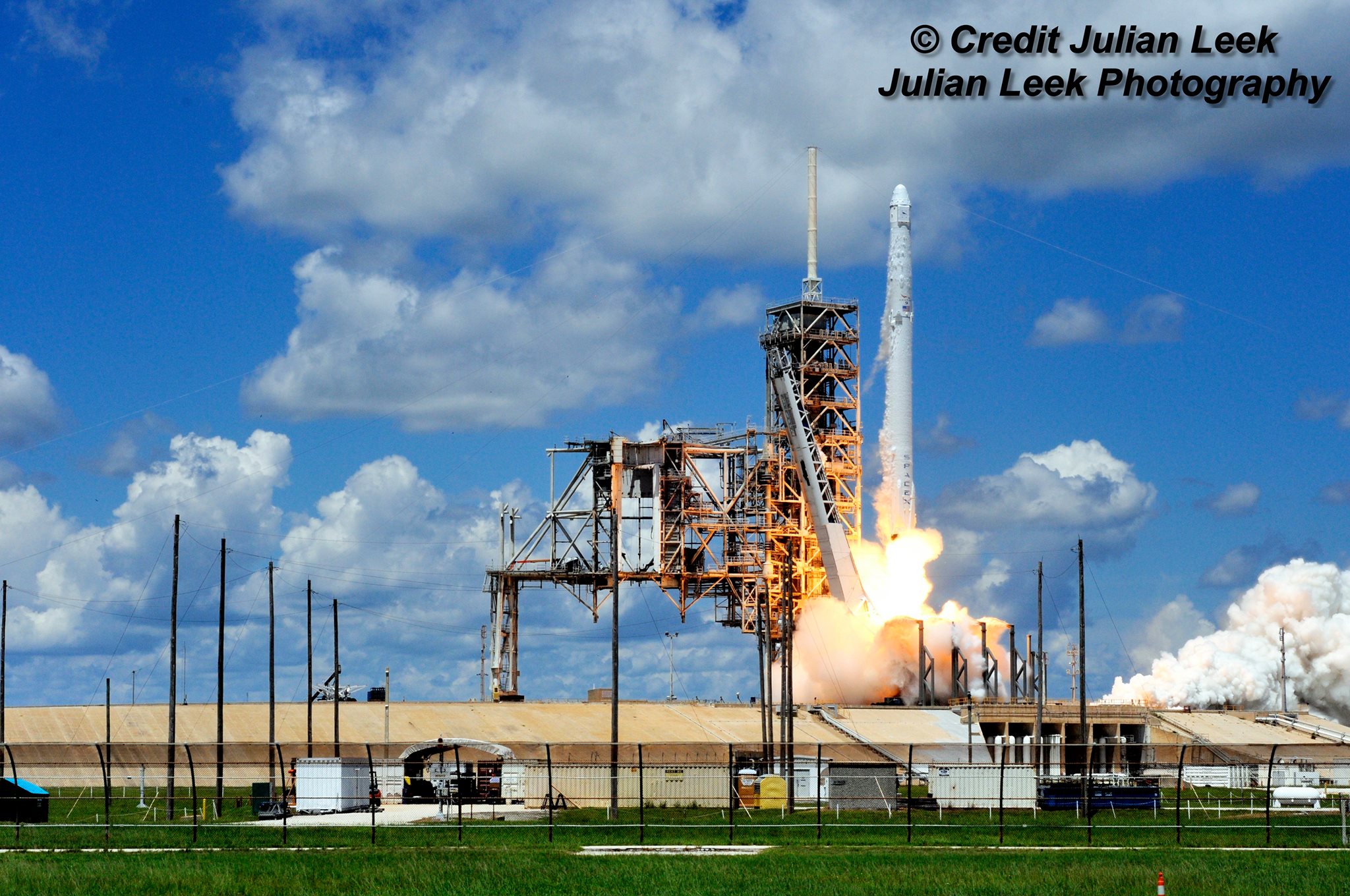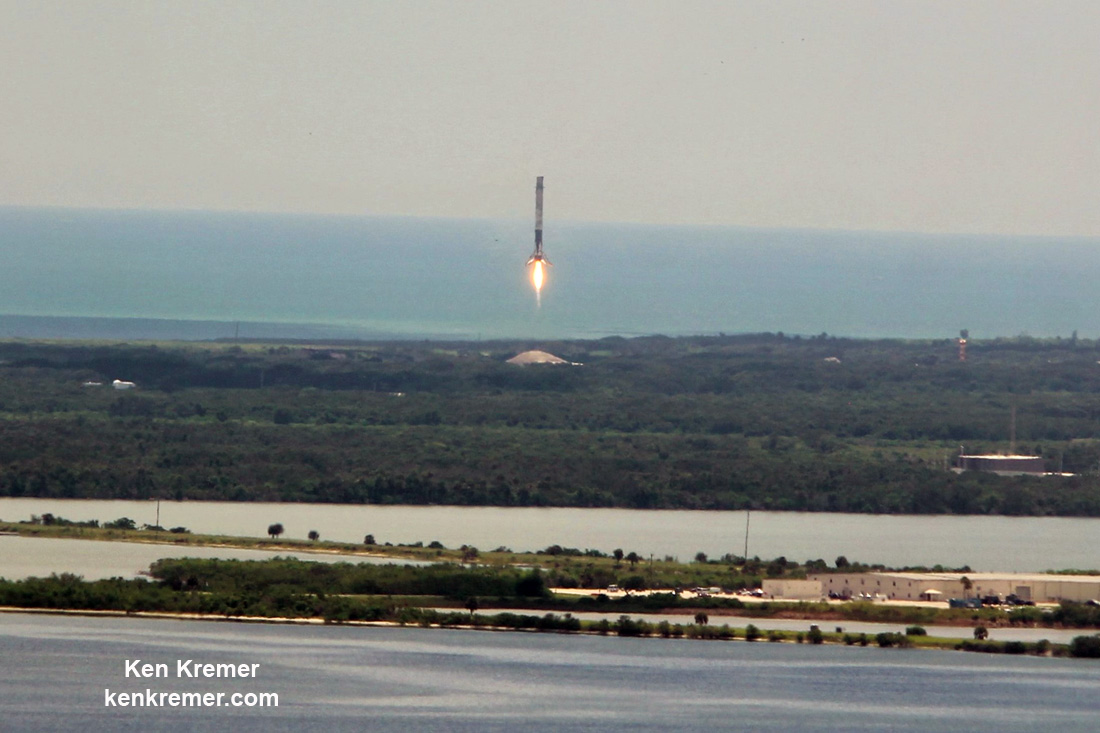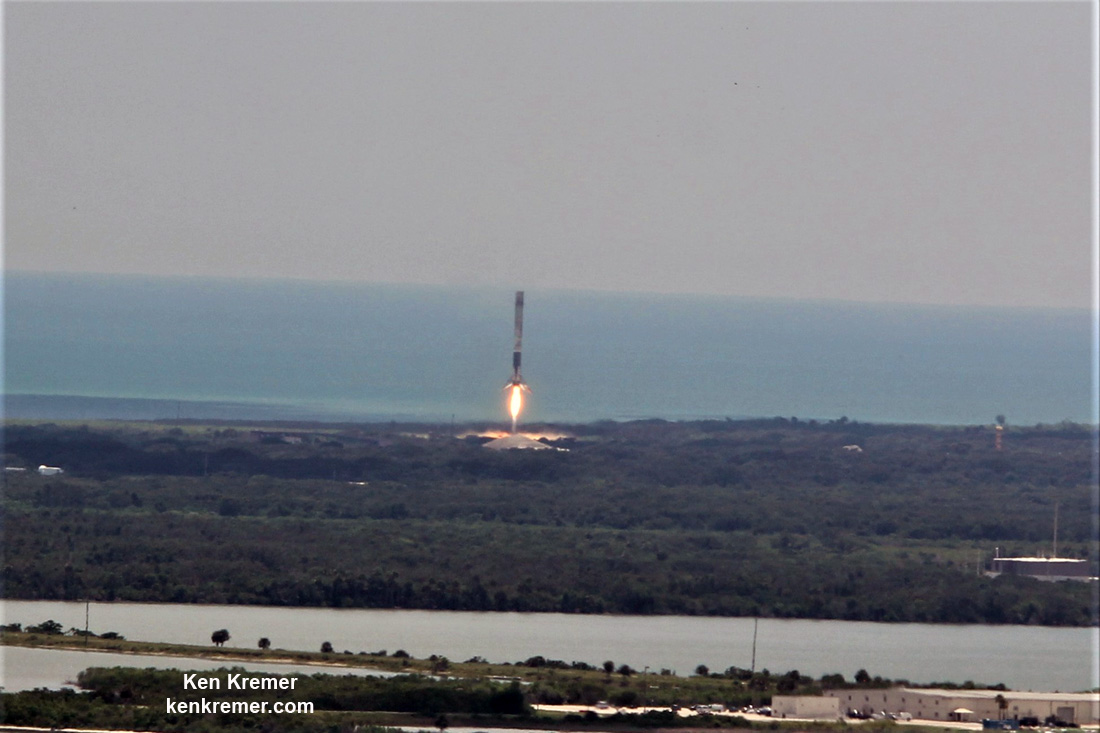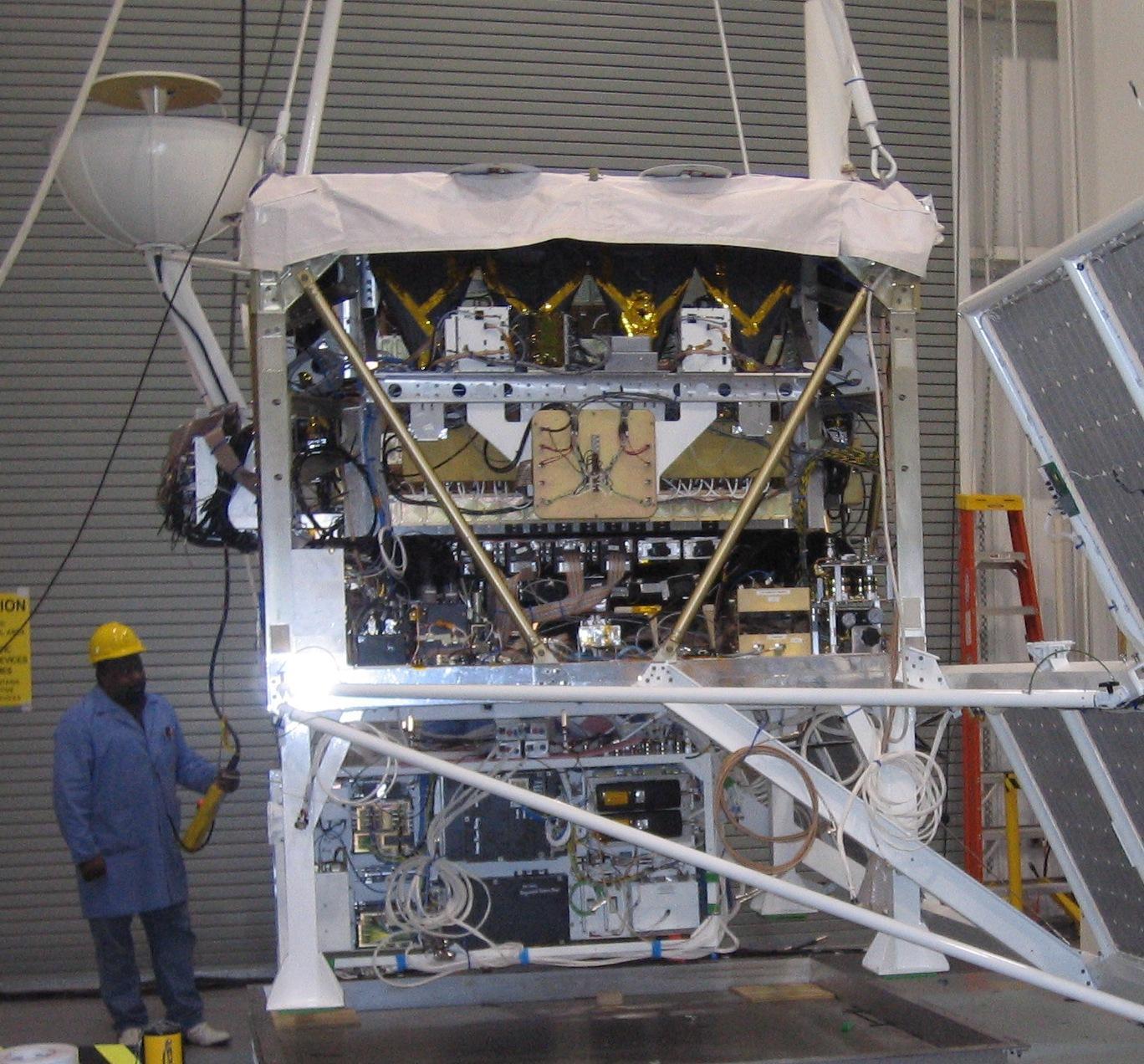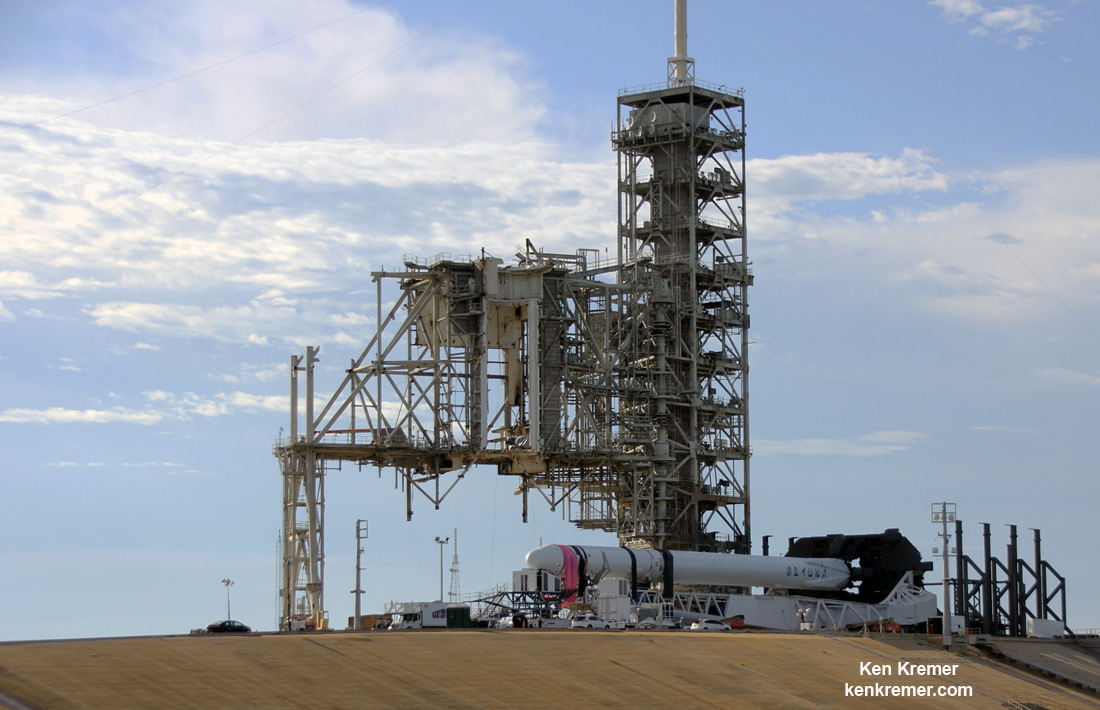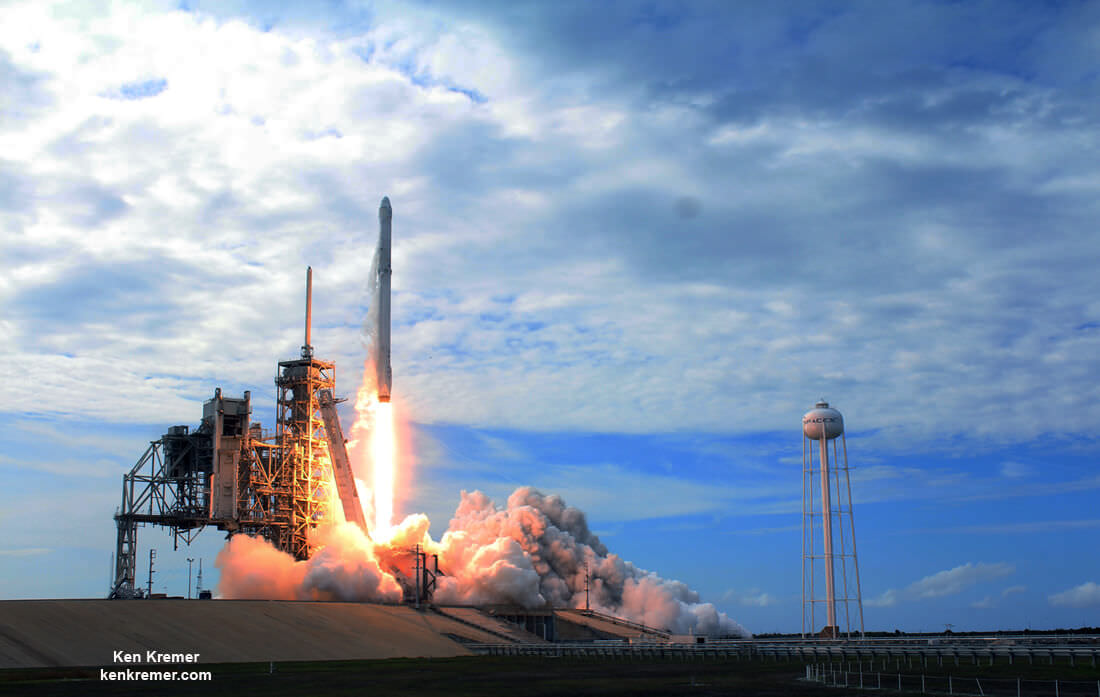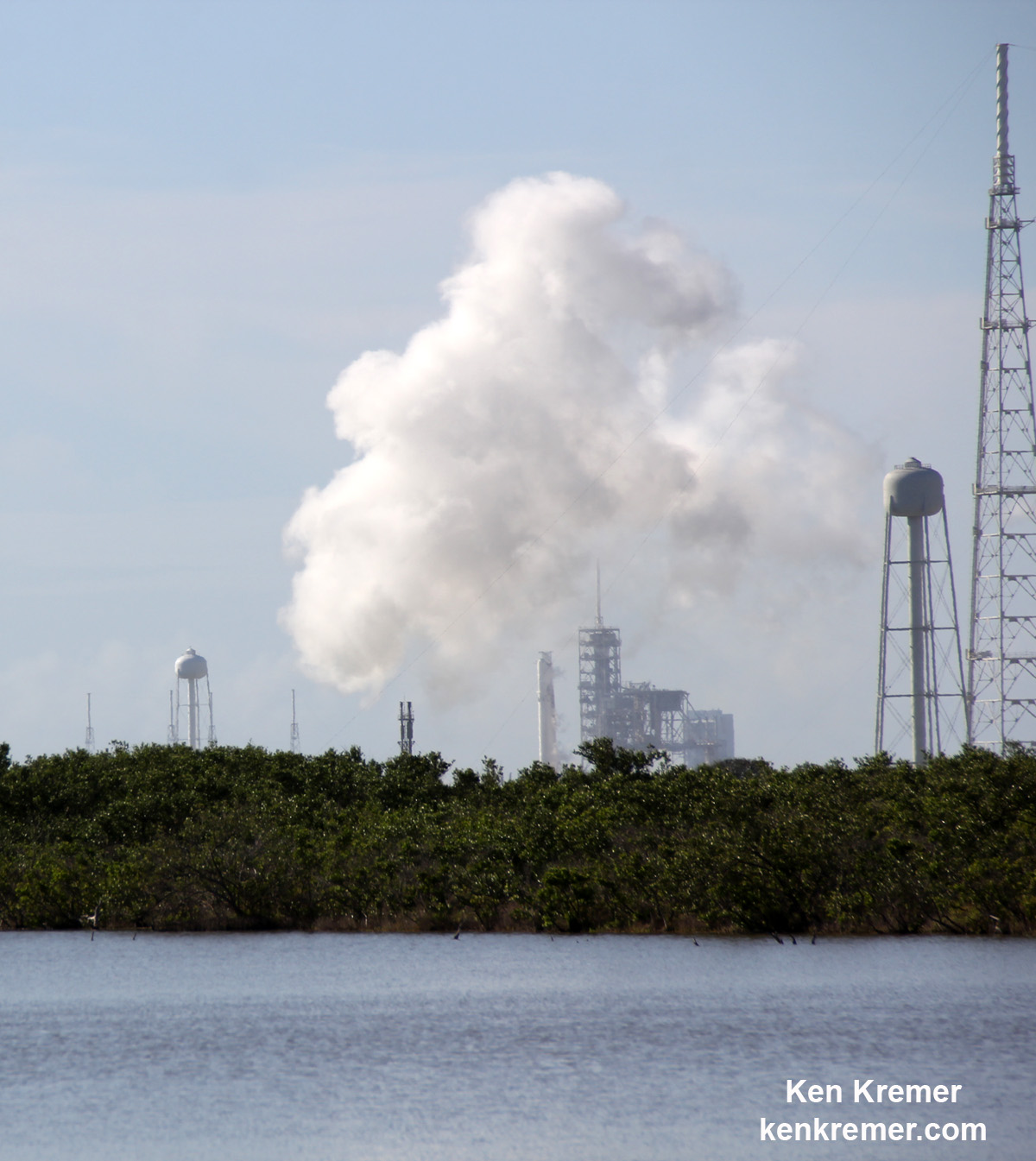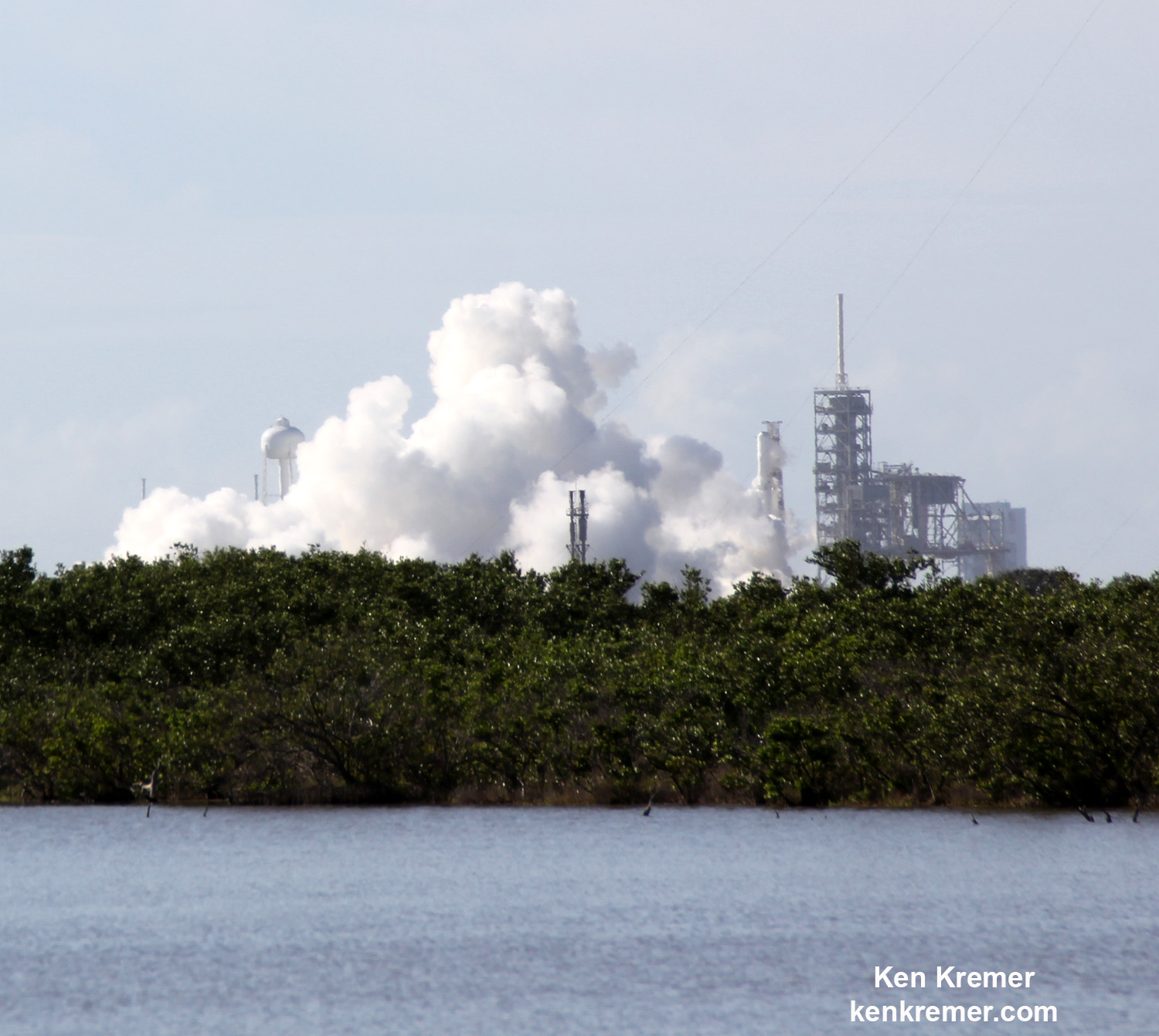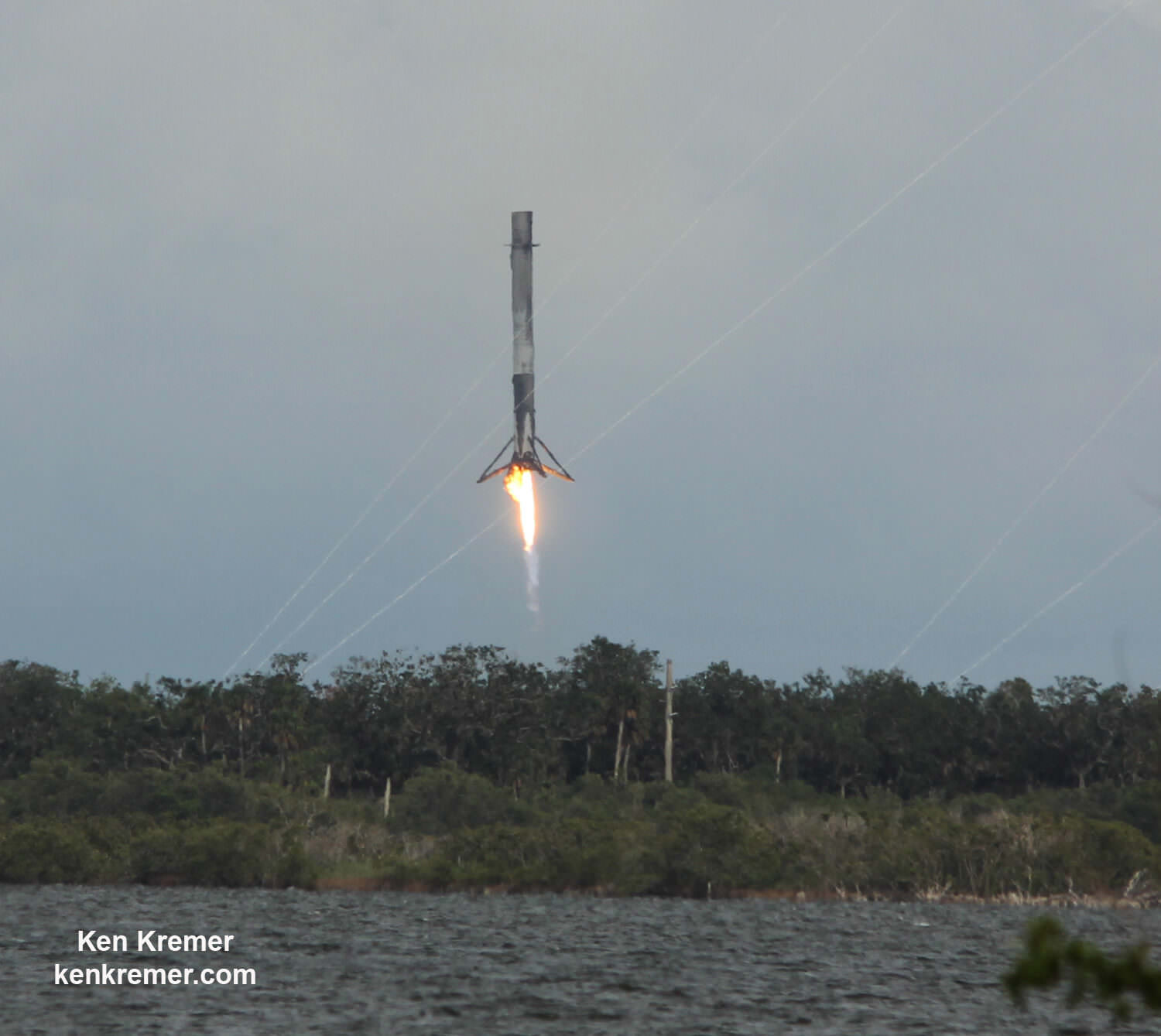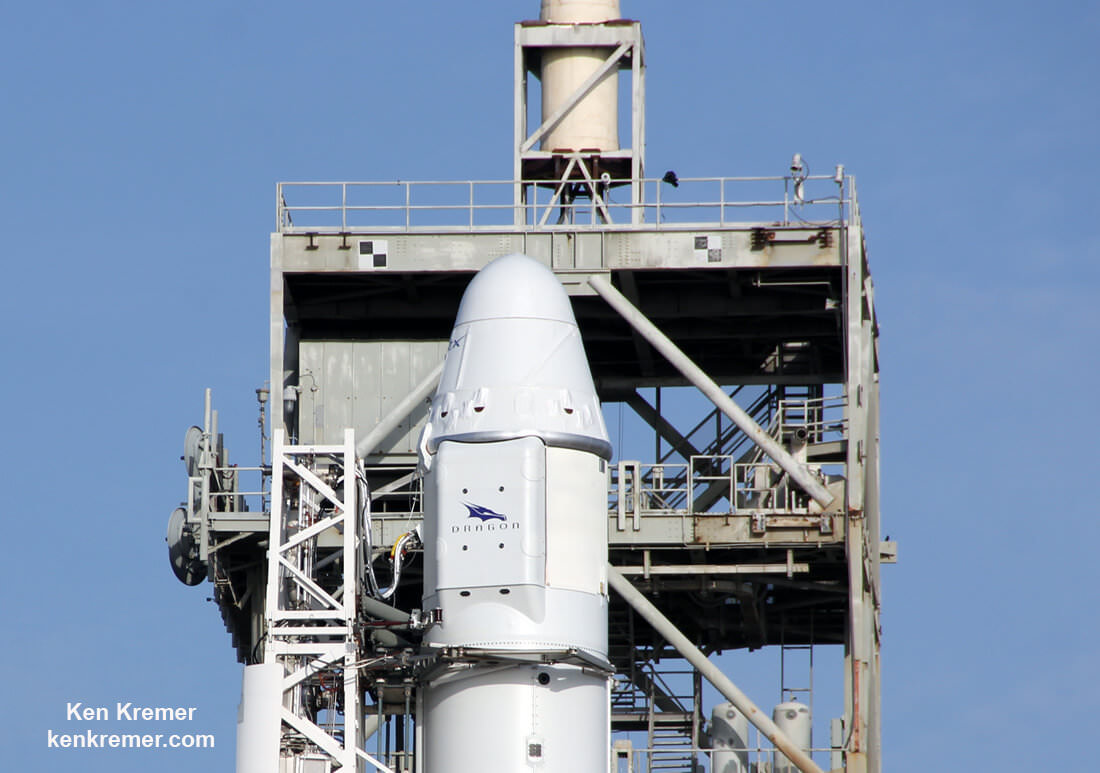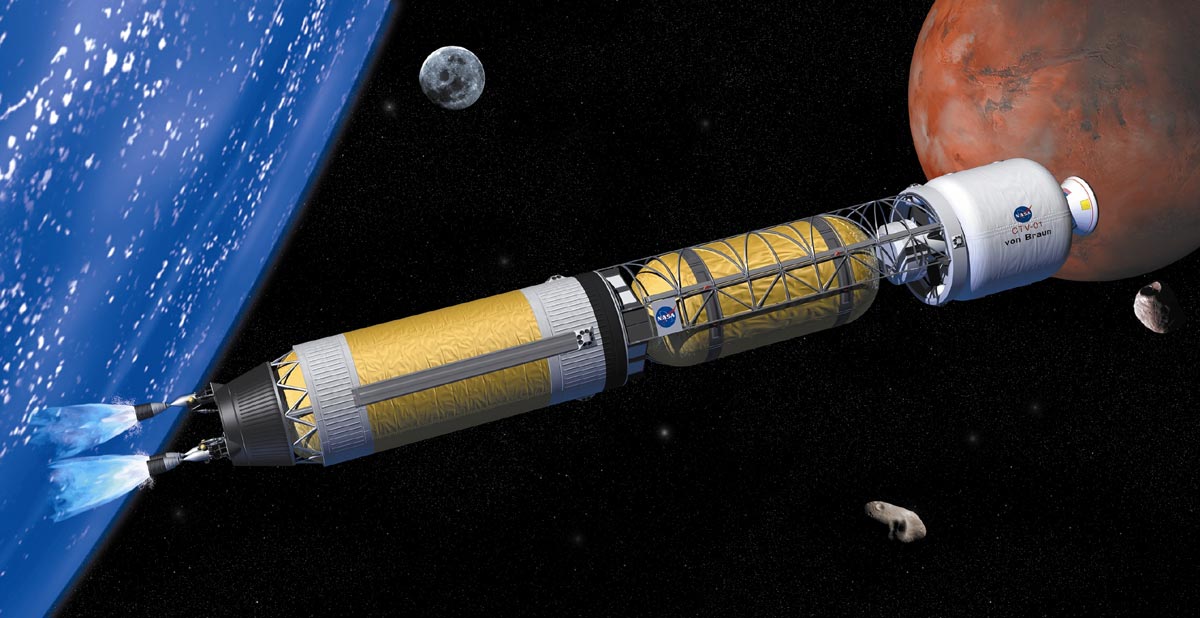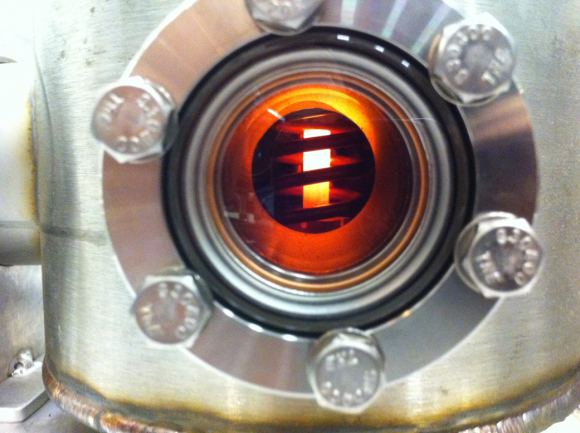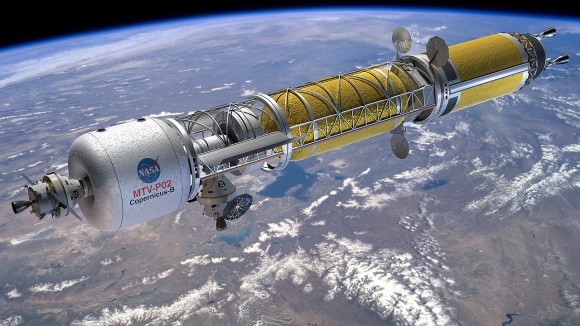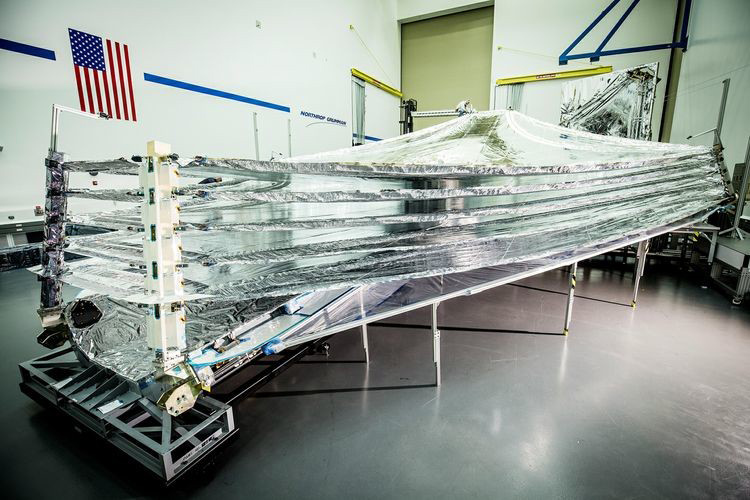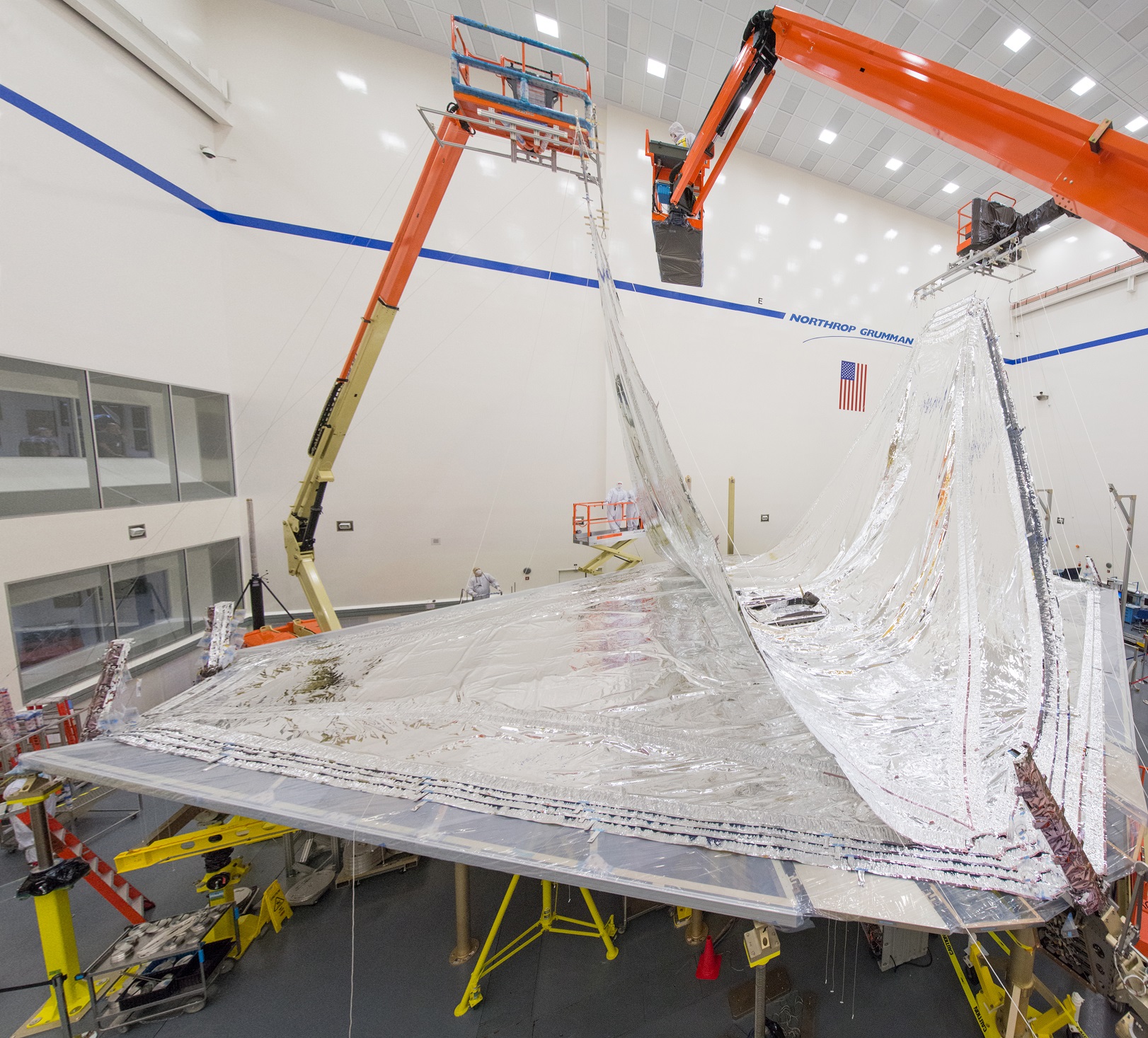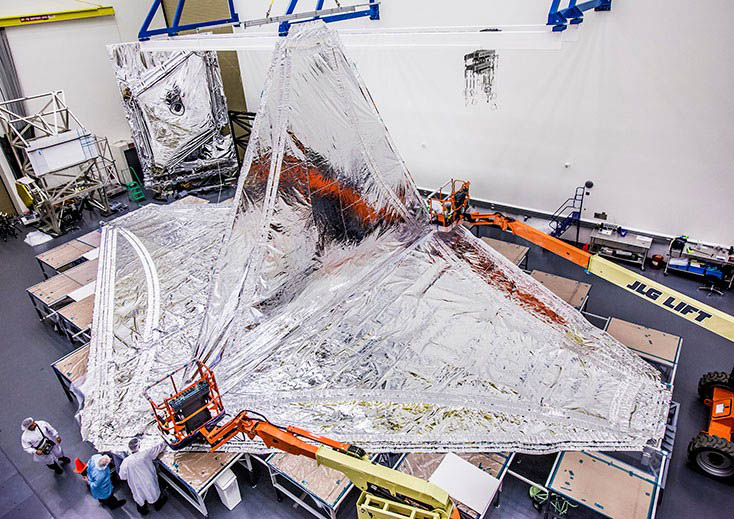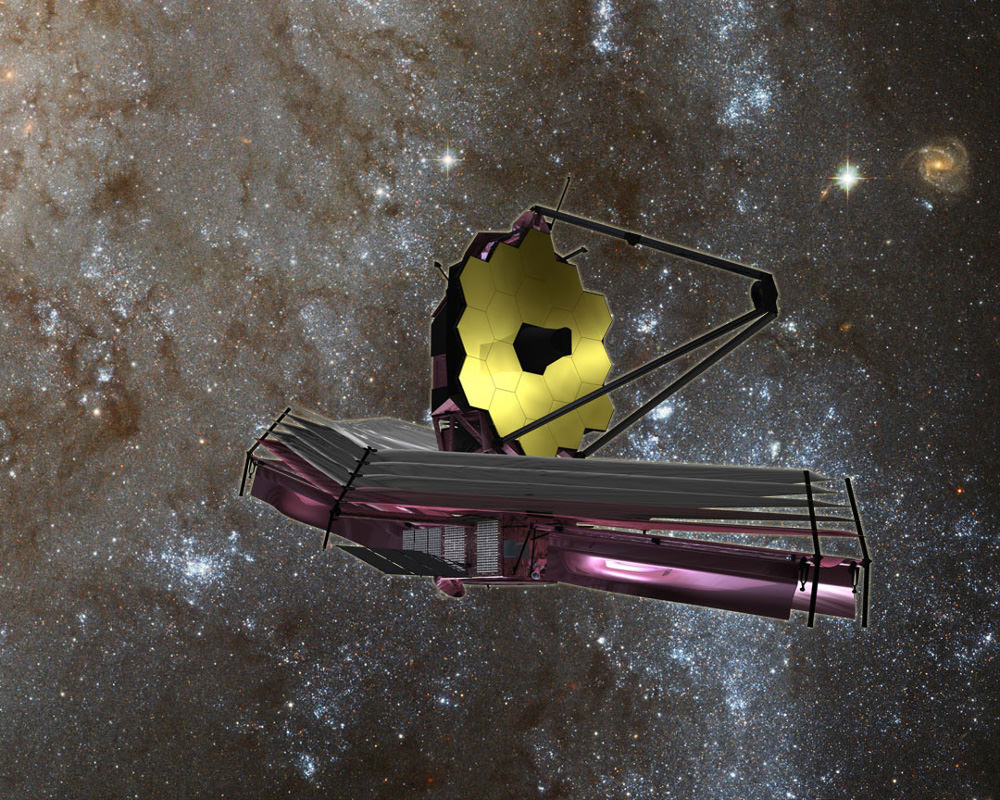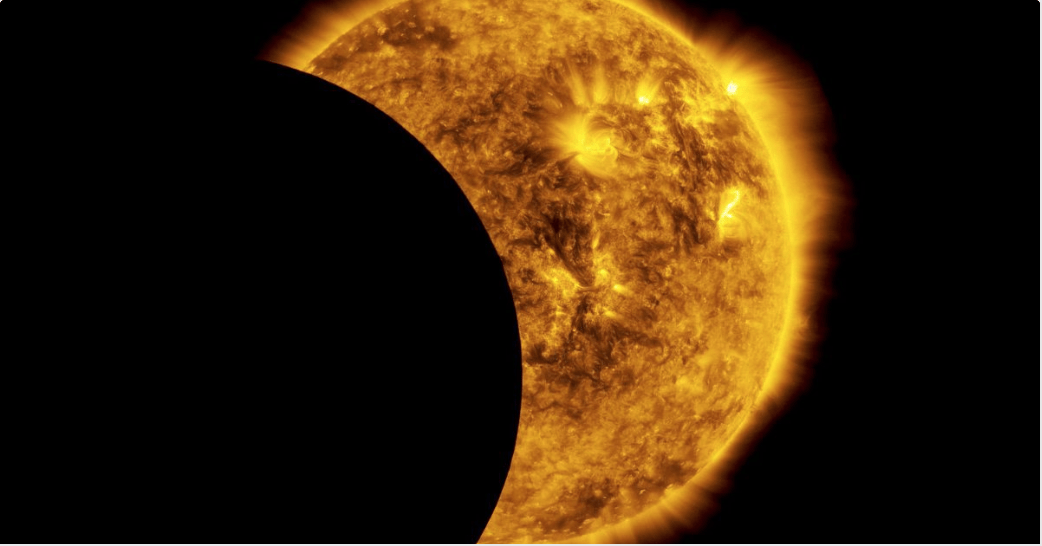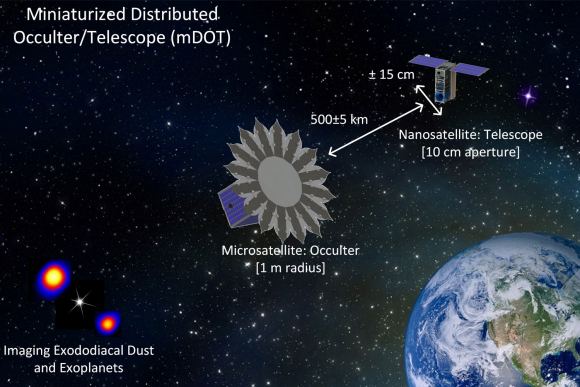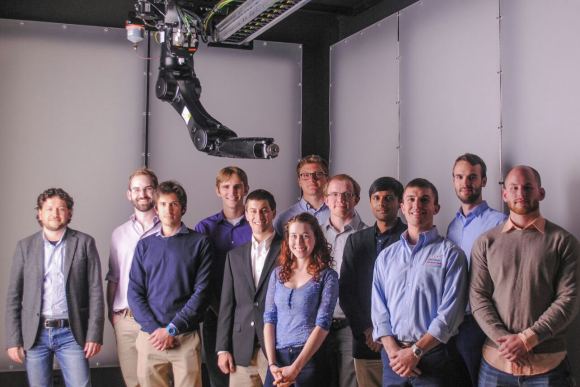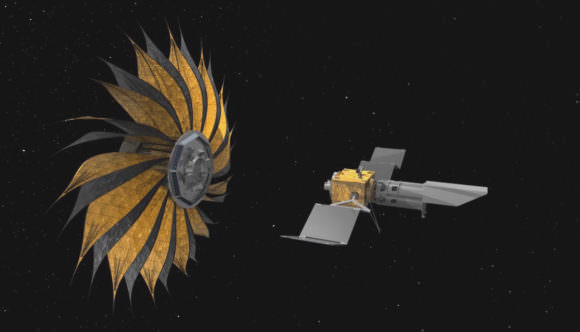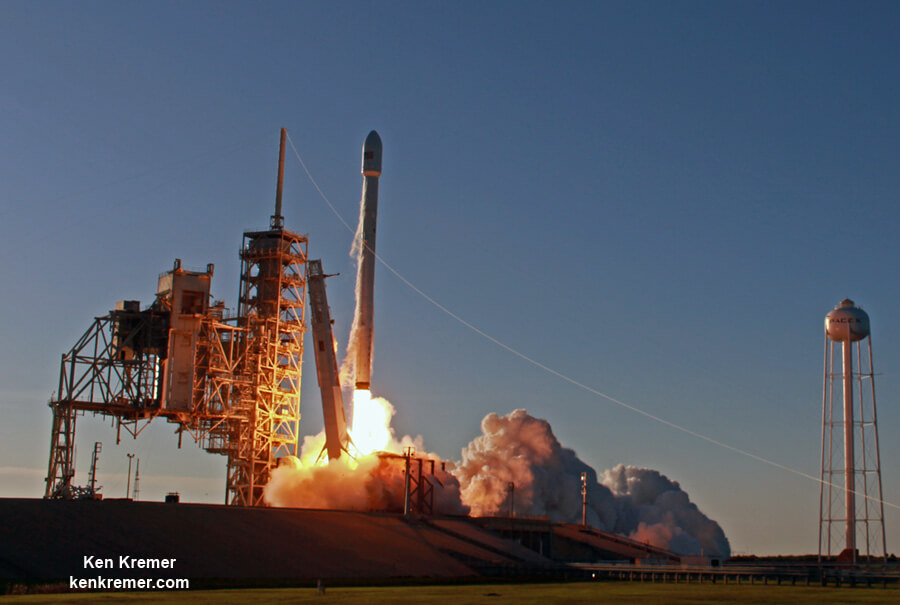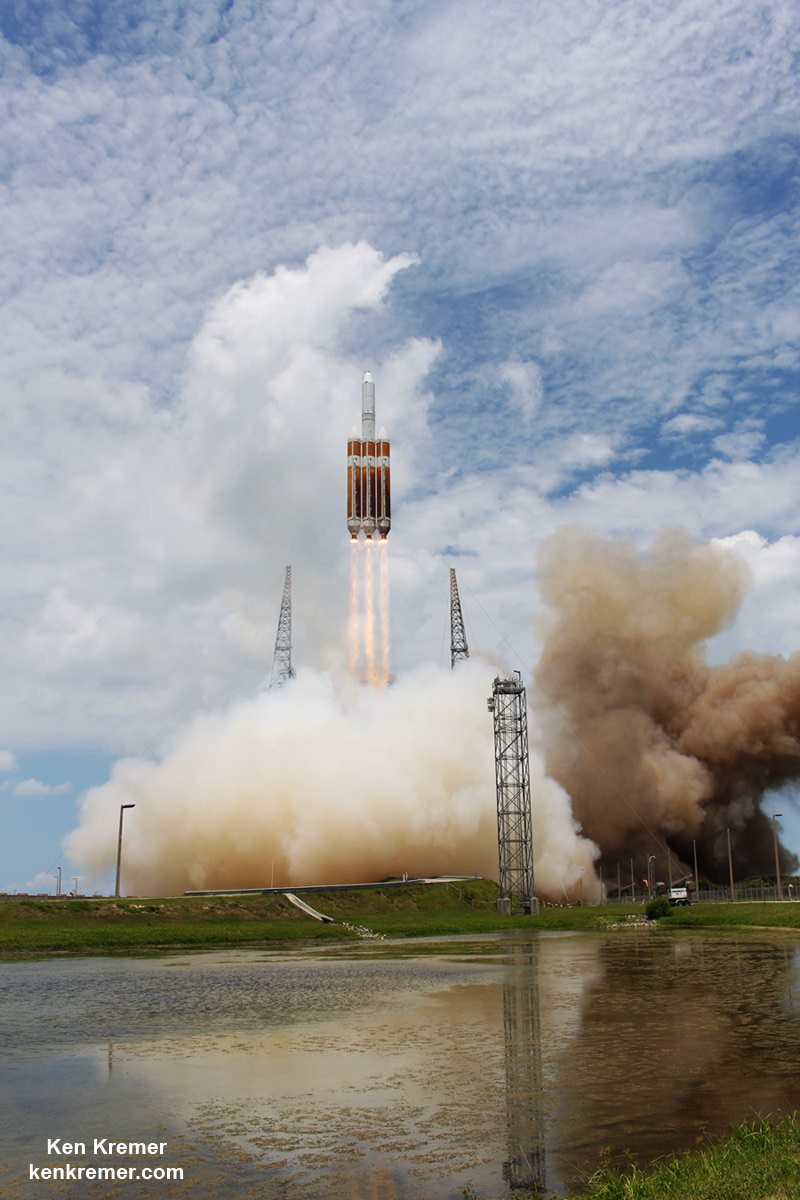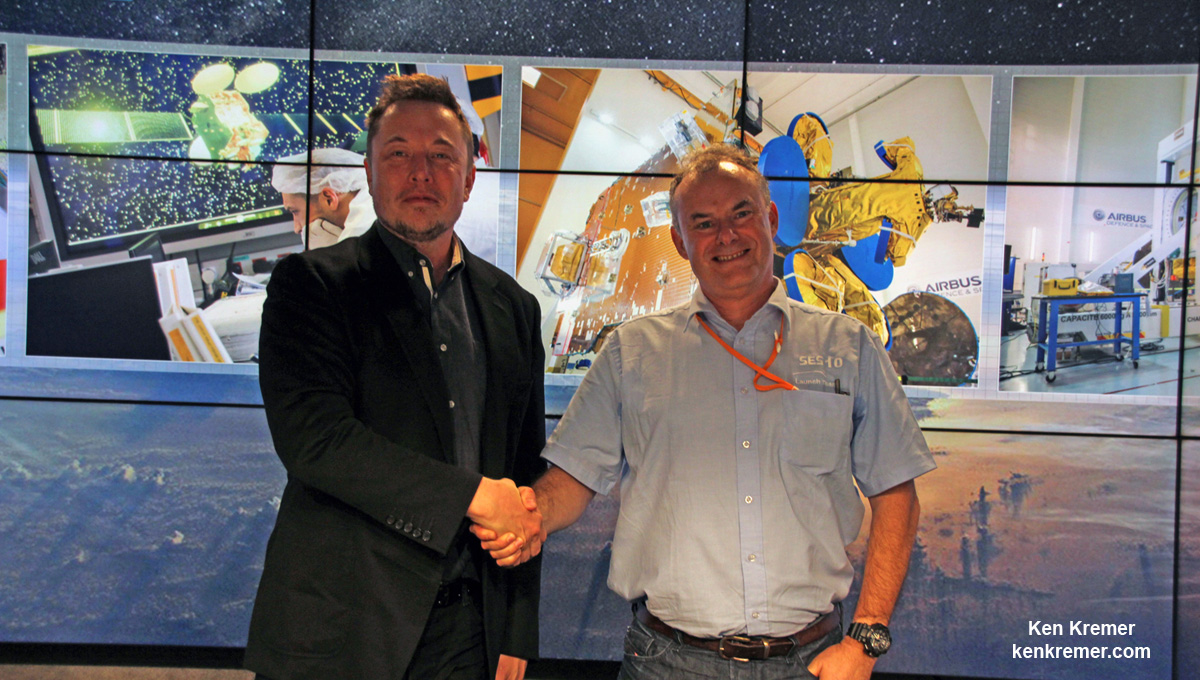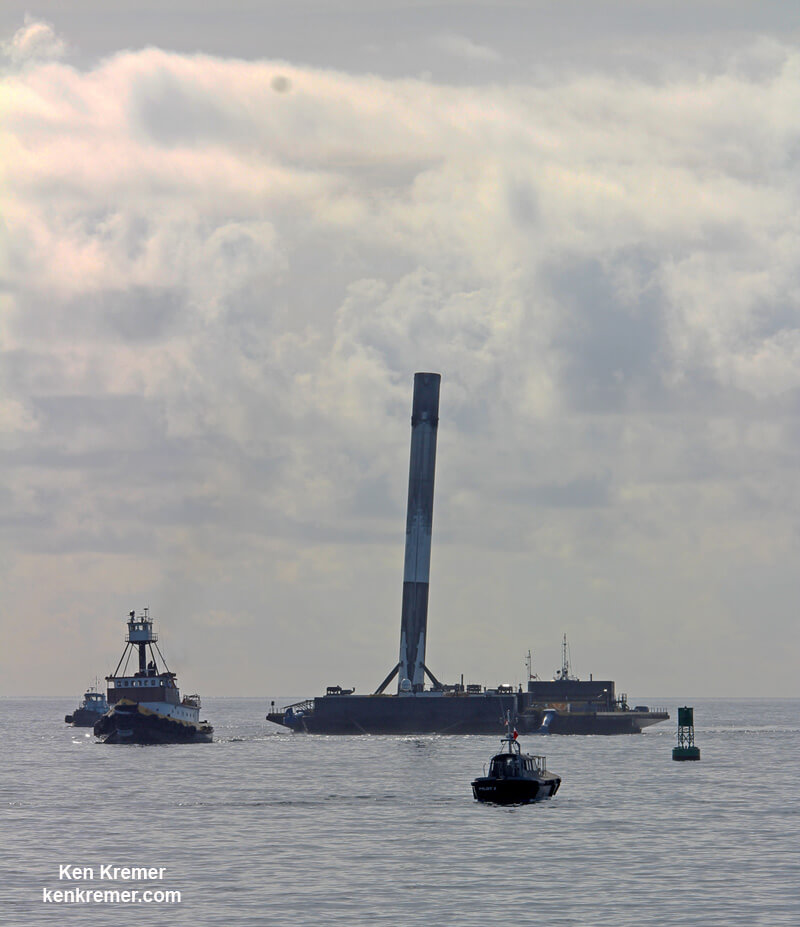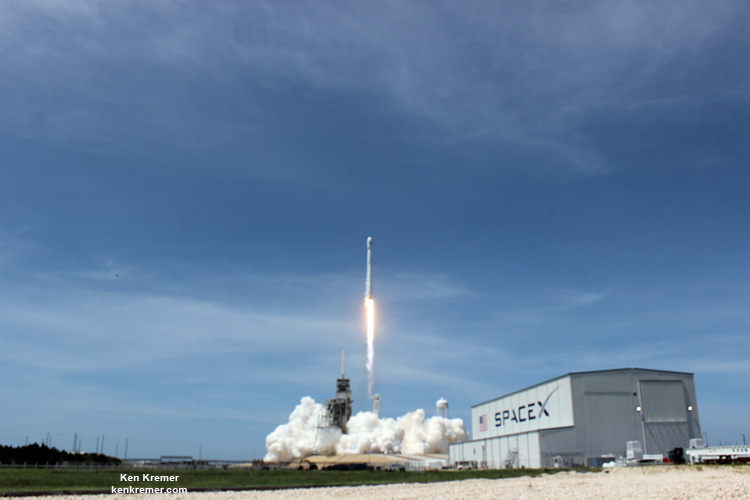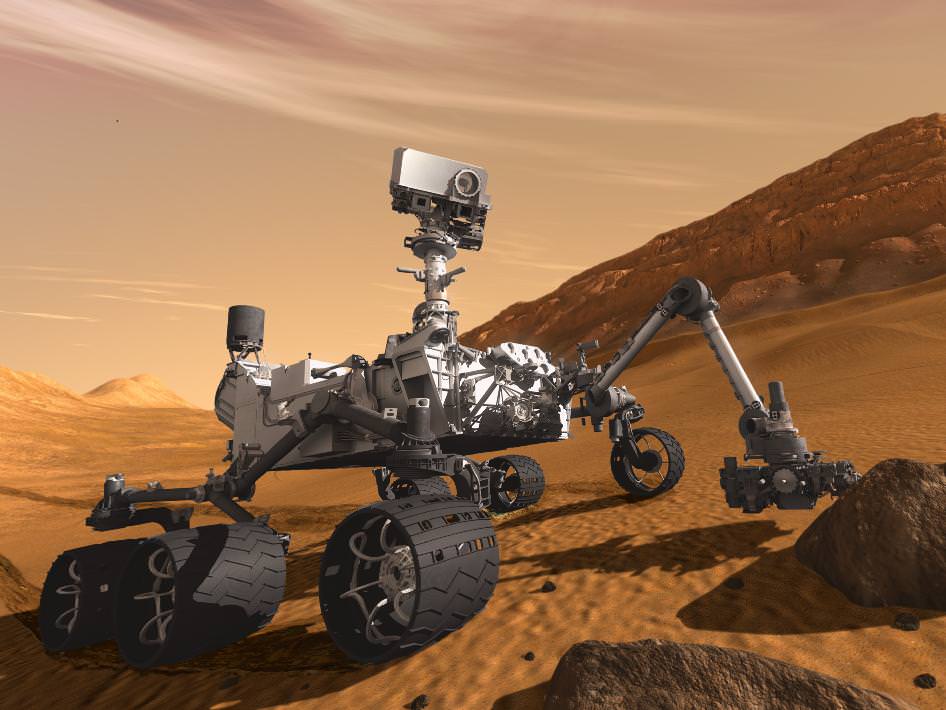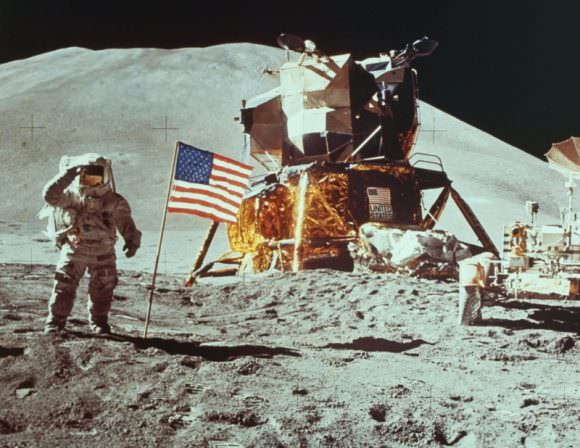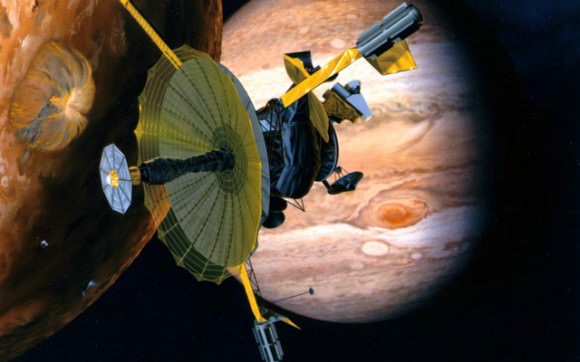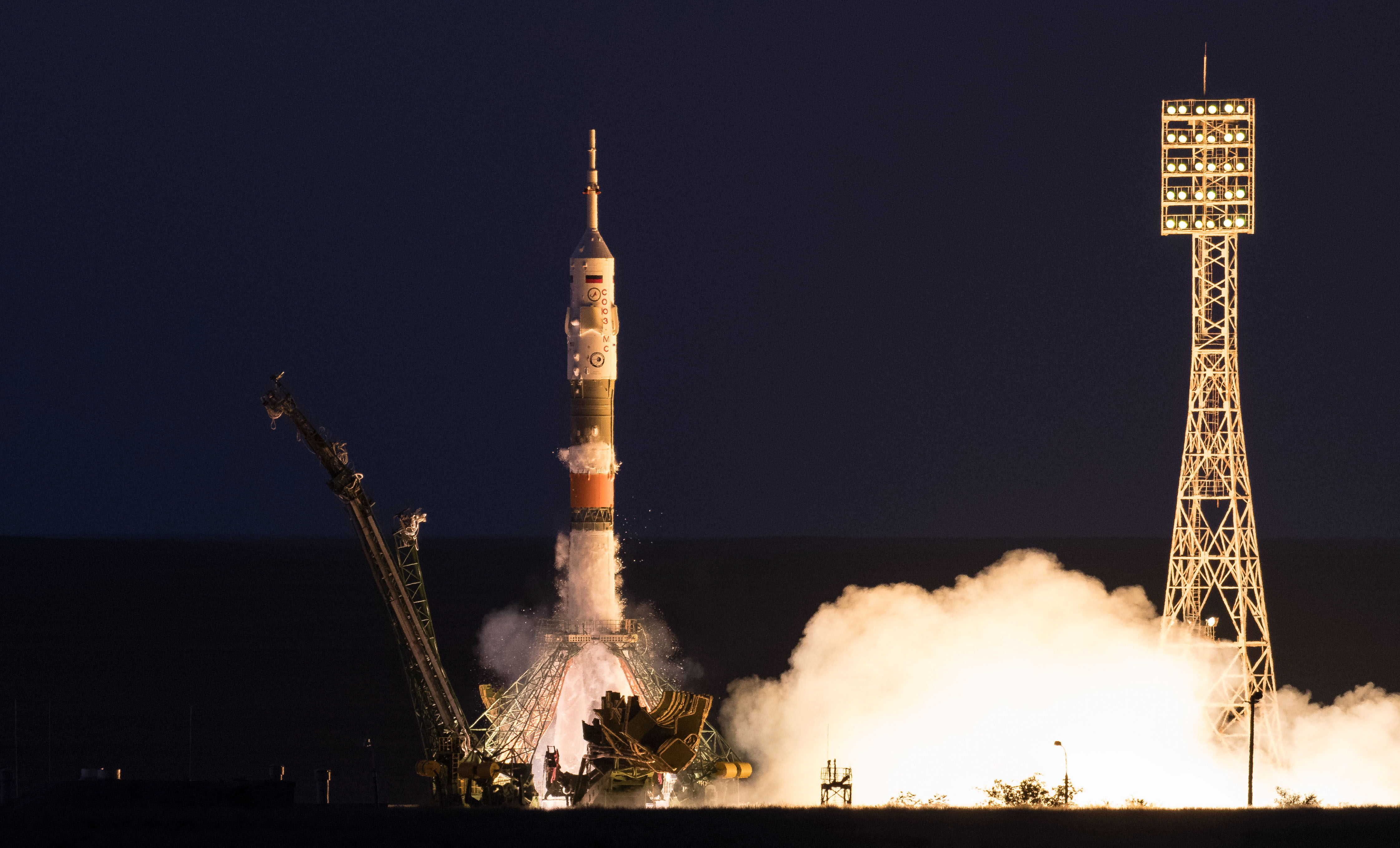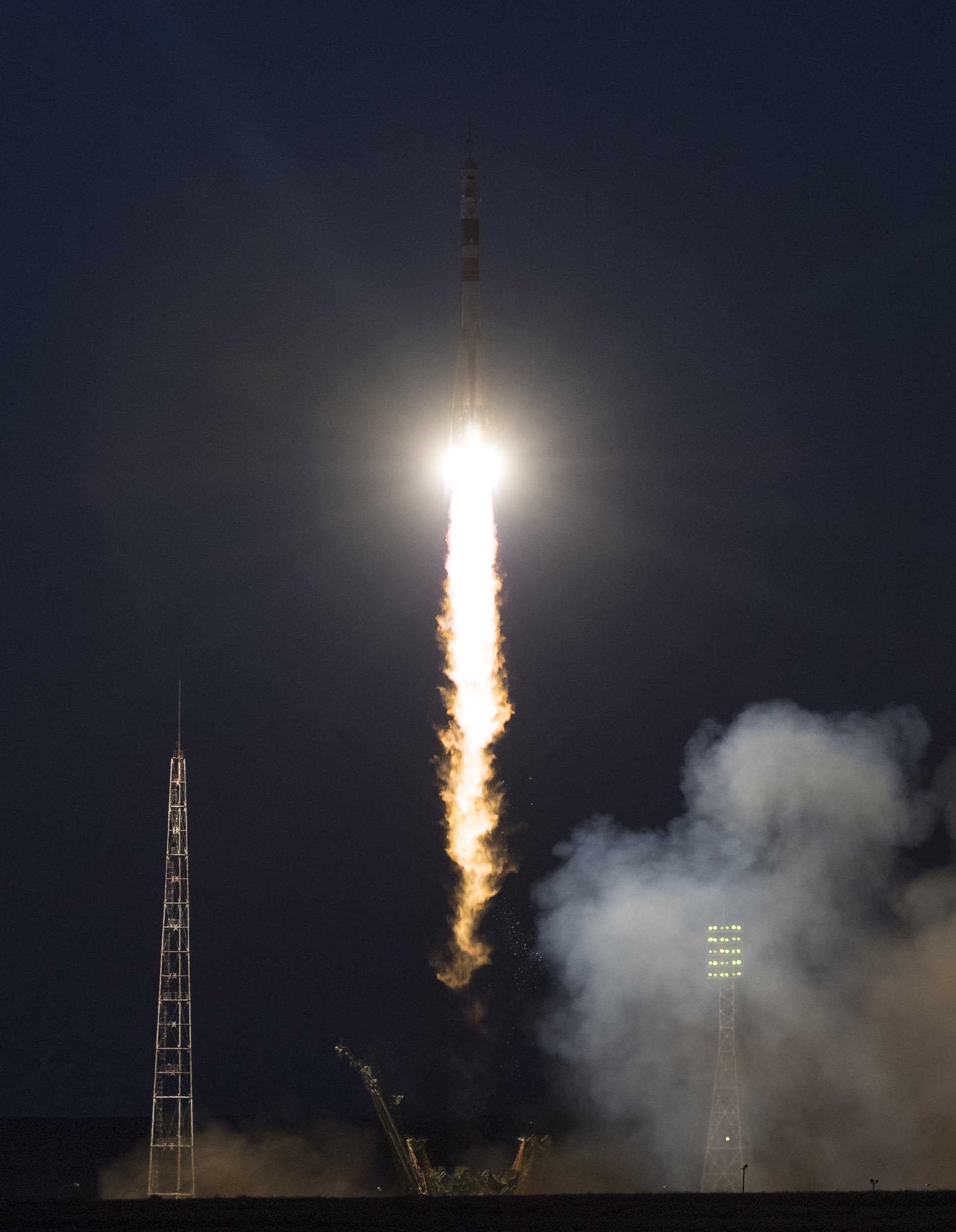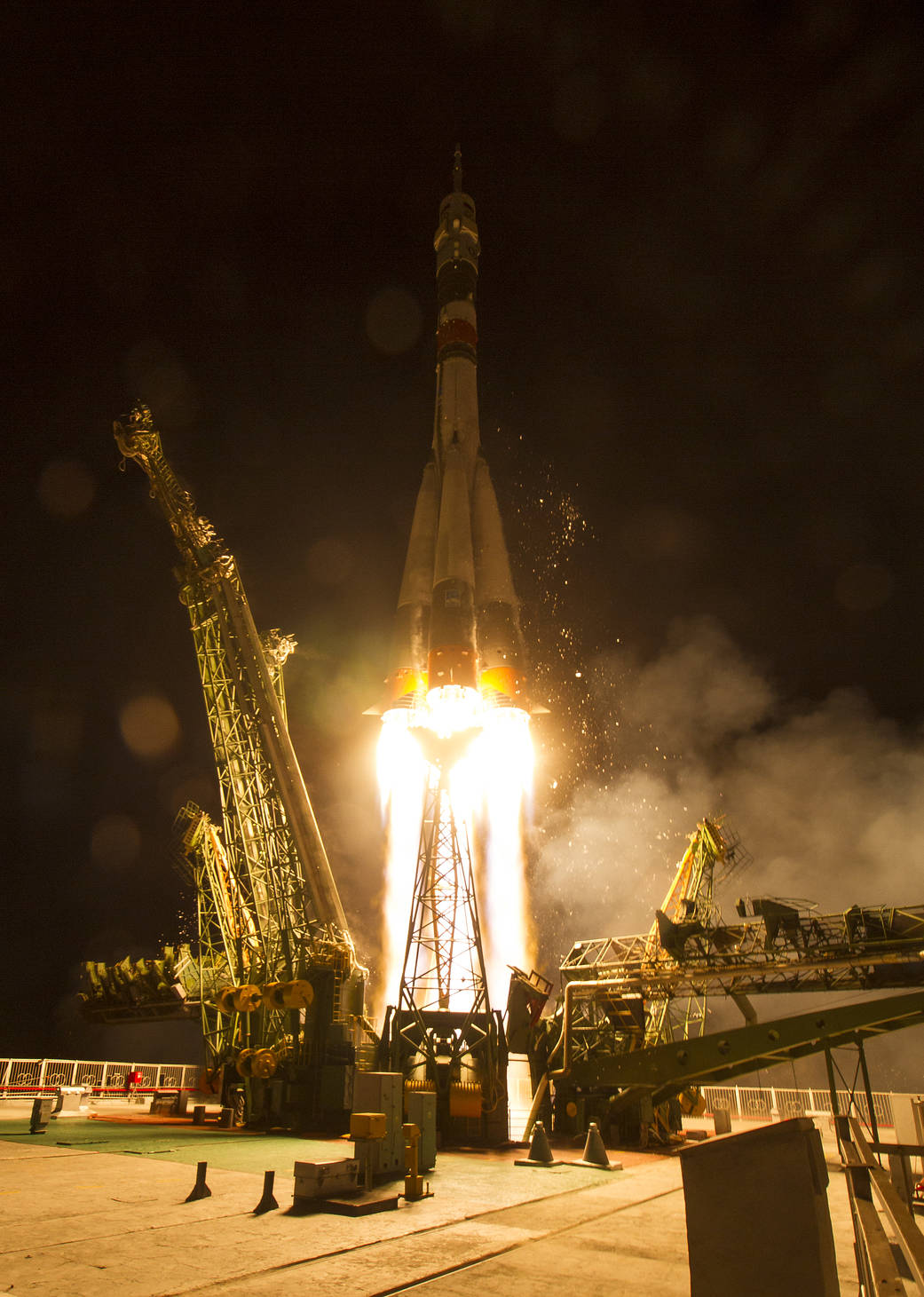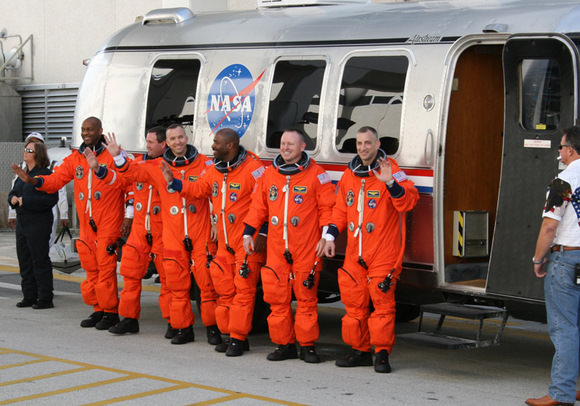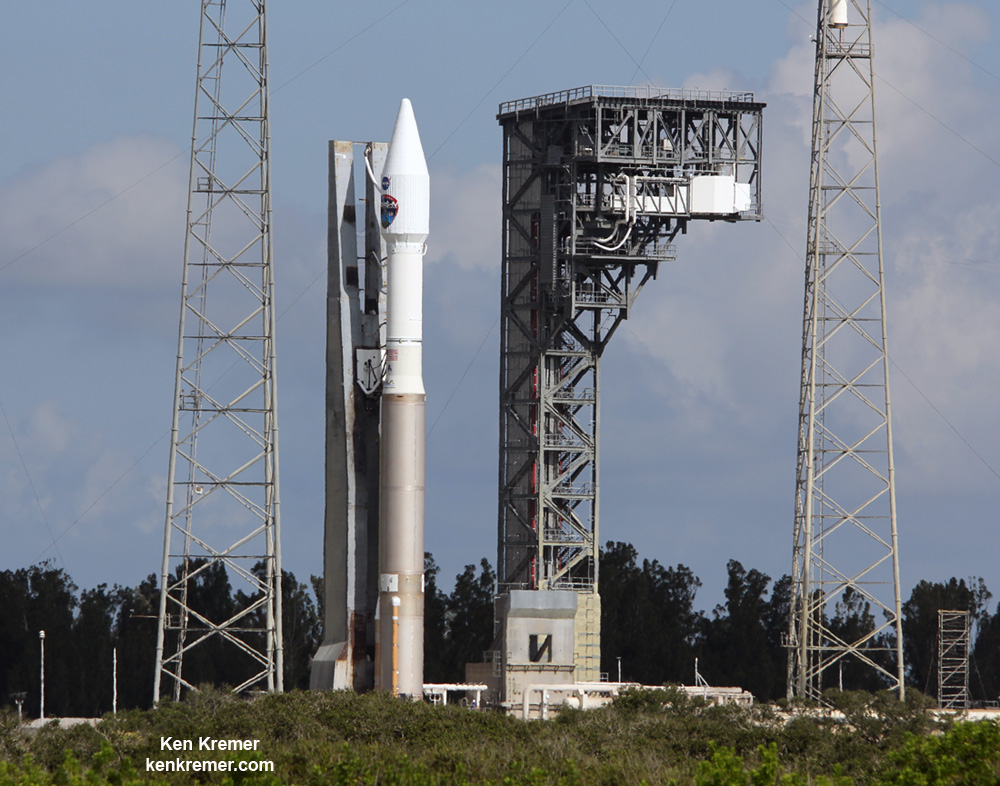
KENNEDY SPACE CENTER, FL – The last of NASA’s next generation Tracking and Data Relay Satellites (TRDS) that looks like a giant alien fish or cocooned creature but actually plays an absolutely vital role in relaying critical science measurements, research data and tracking observations gathered by the International Space Station (ISS), Hubble and a plethora of Earth science missions is poised for blastoff Friday, Aug. 18, morning from the Florida Space Coast.
Liftoff atop a United Launch Alliance Atlas V rocket of NASA’s $408 million eerily insectoid-looking TDRS-M science relay comsat atop a United Launch Alliance (ULA) Atlas V rocket is scheduled to take place from Space Launch Complex 41 at Cape Canaveral Air Force Station at 8:03 a.m. EDT (2:03 GMT) Aug. 18.
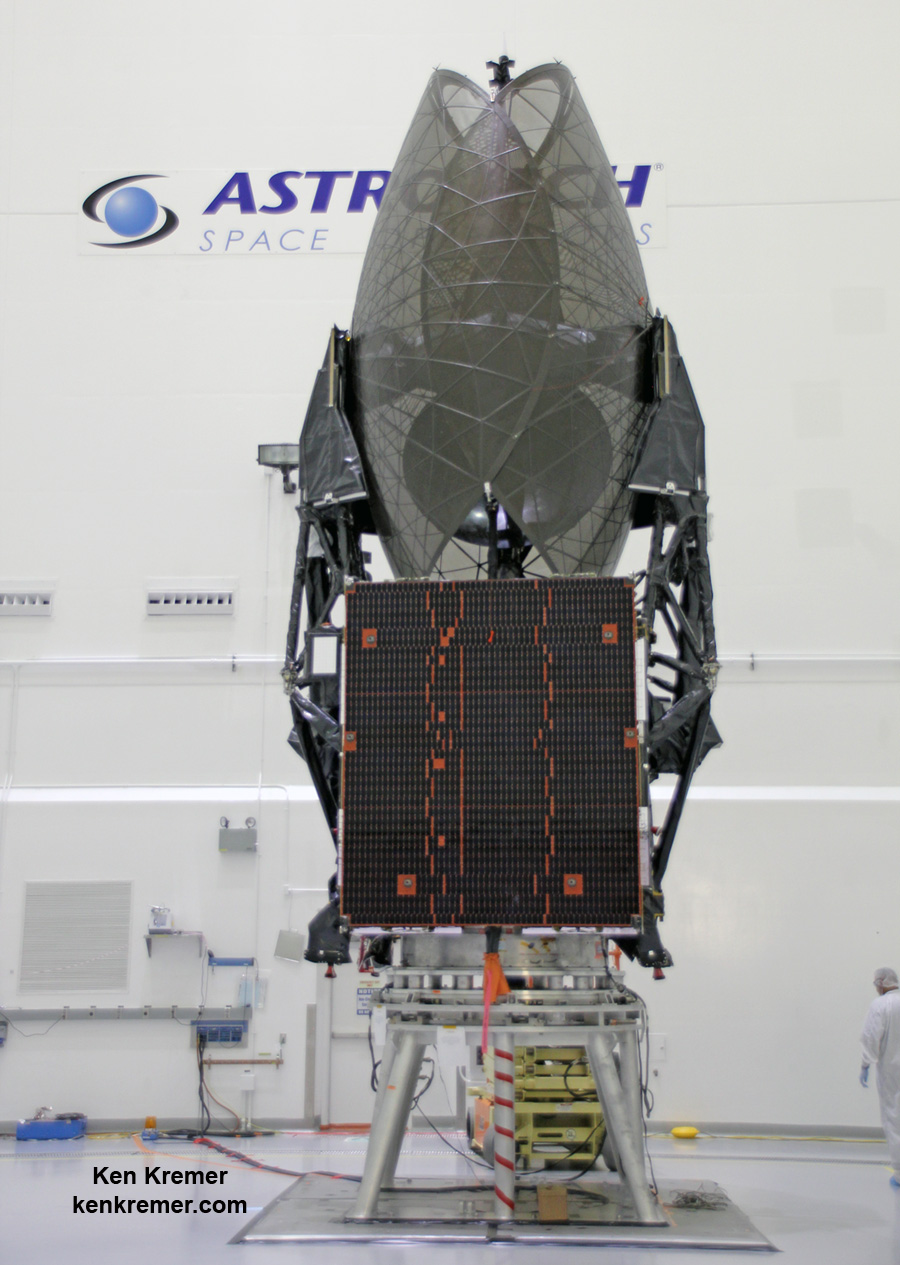
The Atlas V/TDRS-M launch stack was rolled out from the ULA Vertical Integration Facility (VIF) to pad 41 Wednesday morning, Aug 16 starting at about 9:10 a.m. EDT. The quarter mile move took about 50 minutes and went off without a hitch.
“The spacecraft, Atlas V rocket and all range equipment are ready,” said NASA launch director Tim Dunn at today’s pre-launch news conference at the Kennedy Space Center. “And the combined government and contractor launch team is prepared to launch TDRS-M — a critical national space asset for space communications.”
The rocket and spacecraft sailed through the Flight Readiness Review (FRR) and Launch Ready Review (LRR) over the past few days conducted by NASA, ULA and Boeing and the contractor teams.
The two stage Atlas V rocket stands 191 feet tall.

You can witness the launch with you own eyes from many puiblic beaches, parks and spots ringing the Kennedy Space Center.
If you can’t personally be here to witness the launch in Florida, you can always watch NASA’s live coverage on NASA Television and the agency’s website.
The NASA/ULA/TDRS-M launch coverage will be broadcast on NASA TV beginning at 7:30 a.m. as the countdown milestones occur on Aug. 18 with additional commentary on the NASA launch blog:
You can watch the launch live at NASA TV at – http://www.nasa.gov/nasatv
The launch window opens at 8:03 a.m. EDT extends for 40 minutes from 8:03 a.m. to 8:43 a.m.
In the event of delay for any reason, the next launch opportunity is Saturday, Aug. 19 with NASA TV coverage starting about 7:30 a.m. EDT. The launch window opens at 7:59 a.m. EDT.
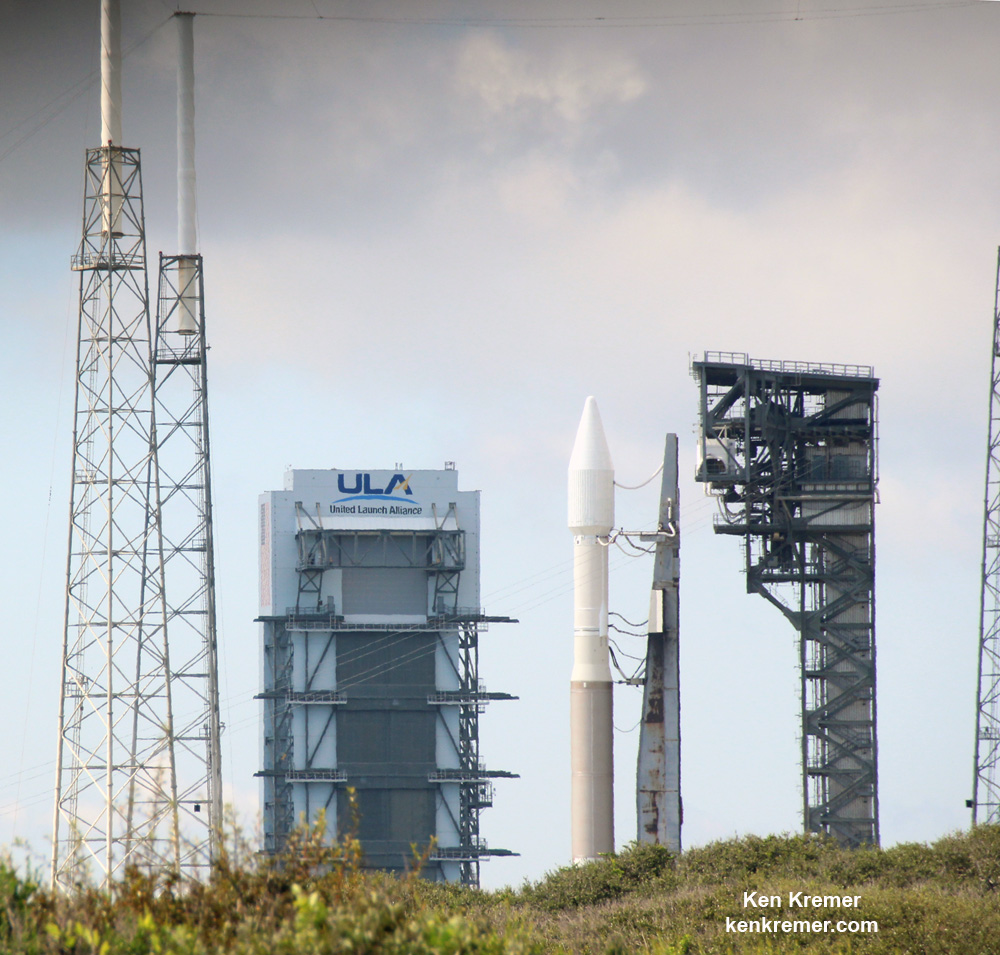
The weather looks quite good at this time with an 80% chance of favorable conditions at launch time according to U.S. Air Force meteorologists with the 45th Space Wing Weather Squadron at Patrick Air Force Base. The primary concerns on Aug. 18 are for thick clouds and cumulus clouds.
The odds remain at 80% favorable for the 24 hour scrub turnaround day on Aug. 19.
The launch was originally scheduled for Aug. 3 but was delayed a few weeks when the satellite’s Omni S-band antenna was damaged during final spacecraft closeout activities.
The Omni S-band antenna was bumped during final processing activities prior to the planned encapsulation inside the nosecone, said a Boeing official at the prelaunch media briefing and had to be replaced and then retested. It is critical to the opening phases of the mission for attitude control.
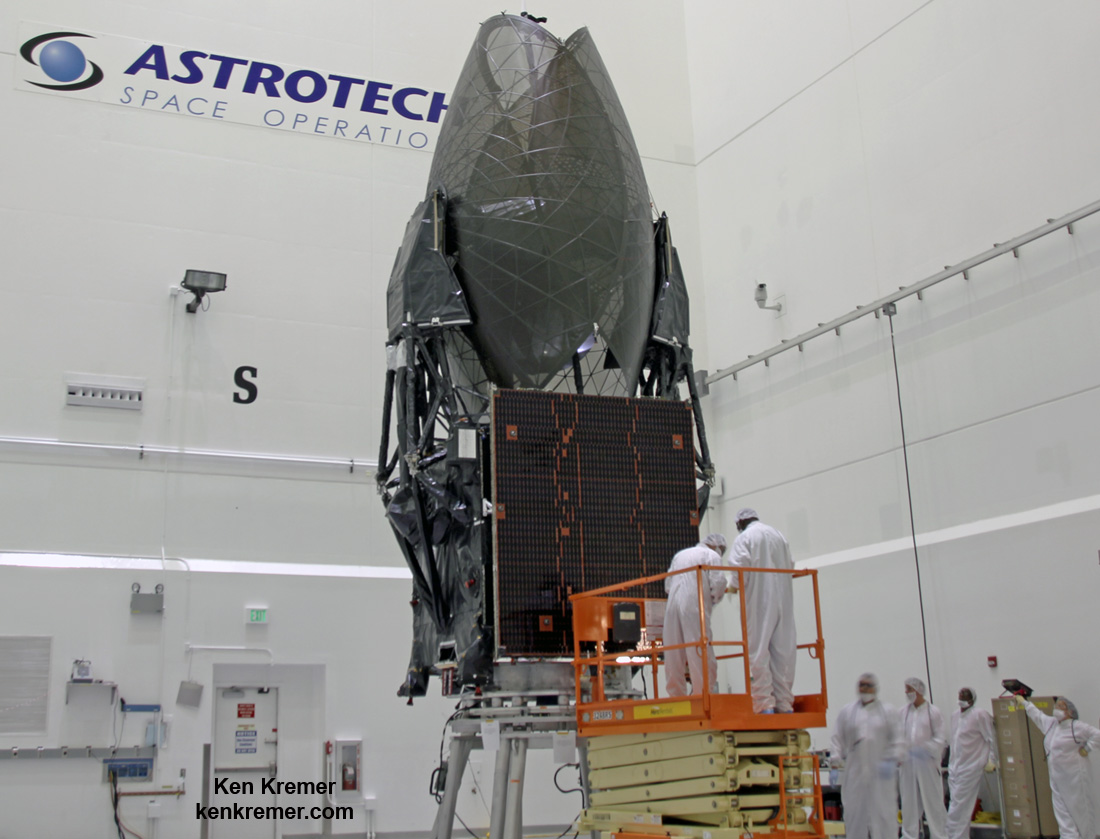
The importance of the TDRS constellation of satellites can’t be overstated.
Virtually all the communications relay capability involving human spaceflight, such as the ISS, resupply vehicles like the SpaceX cargo Dragon and Orbital ATK Cygnus and the soon to launch human space taxis like crew Dragon, Boeing Starliner and NASA’s Orion deep space crew capsule route their science results voice, data, command, telemetry and communications via the TDRS network of satellites.
The TDRS constellation enables both space to space and space to ground communcations for virtually the entire orbital period.
Plus it’s a super busy time at the Kennedy Space Center. Because, if all goes well Friday’s launch will be the second this week!
The excitement of space travel got a big boost at the beginning of the week with the lunchtime blastoff of a SpaceX Falcon 9 and Dragon spacecraft on a cargo mission carrying 3 tons of science and supplies to the space station. Read my onsite articles here.
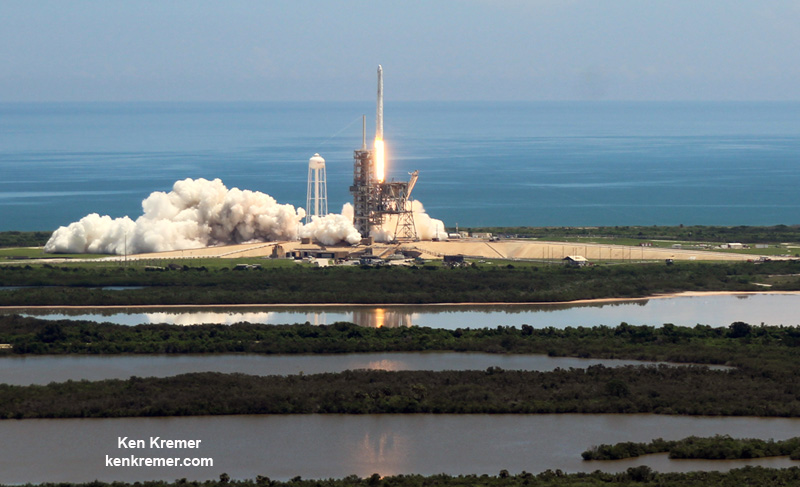
The success of Monday’s SpaceX cargo Dragon rendezvous and berthing to the ISS is virtually entirely dependent on the TDRS network of satellites. That network will be enhanced with Fridays planned liftoff of NASA’s TDRS-M science relay comsat.
TDRS-M looks like a giant insect – or a fish depending on your point of view. It was folded into flight configuration for encapsulation in the clean room and the huge pair of single access antennas resembled a cocoon or a cicada. The 15 foot diameter single access antennas are large parabolic-style antennas and are mechanically steerable.
What does TDRS do? Why is it important? How does it operate?
“The existing Space Network of satellites like TDRS provide constant communications from other NASA satellites like the ISS or Earth observing satellites like Aura, Aqua, Landsat that have high bandwidth data that needs to be transmitted to the ground,” TDRS Deputy Project Manager Robert Buchanan explained to Universe Today during an interview in the Astrotech clean room.
“TRDS tracks those satellites using antennas that articulate. Those user satellites send the data to TDRS, like TDRS-M we see here and nine other TDRS satellites on orbit now tracking those satellites.”
“That data acquired is then transmitted to a ground station complex at White Sands, New Mexico. Then the data is sent to wherever those user satellites want the data to be sent is needed, such as a science data ops center or analysis center.”

TDRS-M, spacecraft, which stands for Tracking and Data Relay Satellite – M is NASA’s new and advanced science data relay communications satellite that will transmit research measurements and analysis gathered by the astronaut crews and instruments flying abroad the International Space Station (ISS), Hubble Space Telescope and over 35 NASA Earth science missions including MMS, GPM, Aura, Aqua, Landsat, Jason 2 and 3 and more.
The TDRS constellation orbits 22,300 miles above Earth and provide near-constant communication links between the ground and the orbiting satellites.
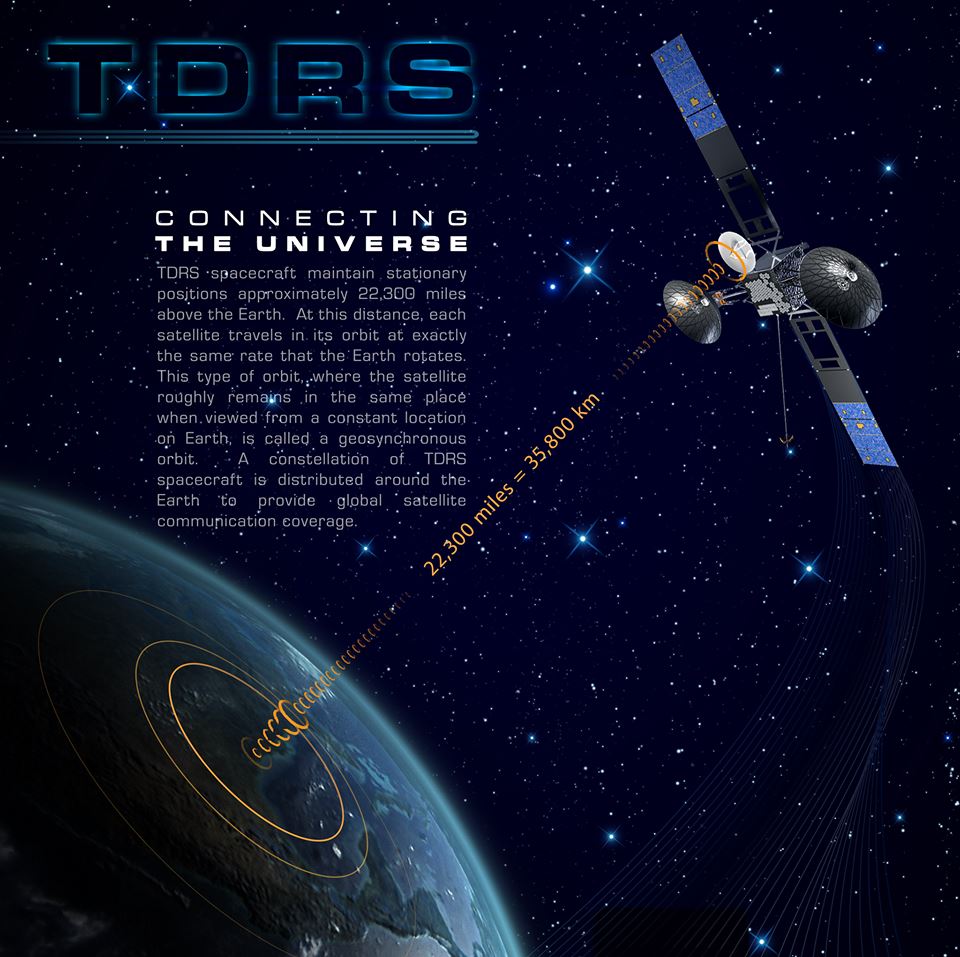
TRDS-M will have S-, Ku- and Ka-band capabilities. Ka has the capability to transmit as much as six-gigabytes of data per minute. That’s the equivalent of downloading almost 14,000 songs per minute says NASA.
The TDRS program is managed by NASA’s Goddard Space Flight Center in Greenbelt, Maryland.
TDRS-M is the third satellite in the third series of NASA’s American’s most powerful and most advanced Tracking and Data Relay Satellites. It is designed to last for a 15 year orbital lifetime.
The first TDRS satellite was deployed from the Space Shuttle Challenger in 1983 as TDRS-A.
TDRS-M was built by prime contractor Boeing in El Segundo, California and is the third of a three satellite series – comprising TDRS -K, L, and M. They are based on the Boeing 601 series satellite bus and will be keep the TDRS satellite system operational through the 2020s.
TDRS-K and TDRS-L were launched in 2013 and 2014.
The Tracking and Data Relay Satellite project is managed at NASA’s Goddard Space Flight Center.
TDRS-M was built as a follow on and replacement satellite necessary to maintain and expand NASA’s Space Network, according to a NASA description.
The gigantic satellite is about as long as two school buses and measures 21 meters in length by 13.1 meters wide.
It has a dry mass of 1800 kg (4000 lbs) and a fueled mass of 3,454 kilogram (7,615 lb) at launch.
TDRS-M will blastoff on a ULA Atlas V in the baseline 401 configuration, with no augmentation of solid rocket boosters on the first stage. The payload fairing is 4 meters (13.1 feet) in diameter and the upper stage is powered by a single-engine Centaur.
TDRS-M will be launched to a Geostationary orbit some 22,300 miles (35,800 km) above Earth.
“The final orbital location for TDRS-M has not yet been determined,” Buchanen told me.
The Atlas V booster was assembled inside the Vertical Integration Facility (VIF) at SLC-41 and was rolled out to the launch pad 2 days before liftoff with the TDRS-M science relay comsat comfortably encapsulated inside the nose cone.
Carefully secured inside its shipping container, the TDRS-M satellite was transported on June 23 by a US Air Force cargo aircraft from Boeing’s El Segundo, California facility to Space Coast Regional Airport in Titusville, Florida, for preflight processing at Astrotech.
Watch for Ken’s continuing onsite TDRS-M, CRS-12, ORS 5 and NASA and space mission reports direct from the Kennedy Space Center and Cape Canaveral Air Force Station, Florida.
Stay tuned here for Ken’s continuing Earth and Planetary science and human spaceflight news.
………….
Learn more about the upcoming ULA Atlas TDRS-M NASA comsat on Aug. 18, 2017 , SpaceX Dragon CRS-12 resupply launch to ISS on Aug. 14, Solar Eclipse, NASA missions and more at Ken’s upcoming outreach events at Kennedy Space Center Quality Inn, Titusville, FL:
Aug 17-18: “TDRS-M NASA comsat, SpaceX CRS-12 resupply launches to the ISS, Intelsat35e, BulgariaSat 1 and NRO Spysat, SLS, Orion, Commercial crew capsules from Boeing and SpaceX , Heroes and Legends at KSCVC, ULA Atlas/John Glenn Cygnus launch to ISS, SBIRS GEO 3 launch, GOES-R weather satellite launch, OSIRIS-Rex, Juno at Jupiter, InSight Mars lander, SpaceX and Orbital ATK cargo missions to the ISS, ULA Delta 4 Heavy spy satellite, Curiosity and Opportunity explore Mars, Pluto and more,” Kennedy Space Center Quality Inn, Titusville, FL, evenings

